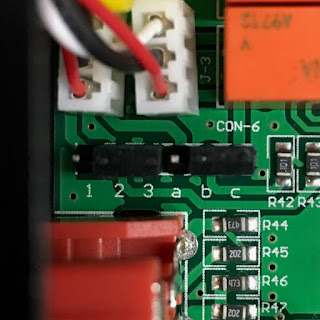Cirrus Logic CS4398

A hundred and twenty something dollars buys a neatly stuffed PCB with Wima capacitors in the audio stage. The PCB card slides into a nice anodized aluminum case. But Topping only provided an SMPS wall wart. Hmmm...
For about the same amount of money the Xiang Sheng DAC-01A is built on a solid metal chassis. It sports a real power supply based on an R-Core power transformer that provides an 80VDC rail for the 6N3/5670/WE396A tube buffer/cathode follower blocked by Wima coupling caps.
In spite of the decent quality workmanship, the blue LED pilot light on my unit was flickering since I got it and died a couple days later. But it was an easy fix.
The only upgrade I did to the DAC-01A was replace the stock 6N3 tube with a US made NOS 5670 (about $7 a pop), which gave a more refined sound. I regret unloading my 70s date code stash of WE396A/2C51s years ago...I can't afford to buy those back.😞 Anyway, I don't think it would have made the sound 10 times better.😉
Sonically, the DAC-01A trounces the D30. This unit sounds enticing. Maybe others will consider this colored because of the tube buffer. But to my ears it is A LOT more musical! Music IS THE BIG picture folks, leave the details for laboratory analysis.😄
The unit has two sets of outputs; the normal out, which bypasses the tube buffer, gives up a bit of the dignified poise but still sounds more authoritative than the D30. Although I'm pretty sure the tube output stage will be a delight to pick on by scope jockeys. 😄
BTW, did I mention it also has a headphone output?
Coda
Inasmuch as I laud the Xiang Sheng DAC-01A as great value for the money, if you're in the market for a DAC to playback Redbook CDs, I'd persuade you to hit the flea markets and thrift stores to hunt for an ancient TDA1541-equipped CD player. Even an early 90s CD player with the cheaper TDA1543 chip will give more musical satisfaction than the DAC-01A. However, if you need a Hi-Res capable DAC for the Raspberry Pi music player, computer or server, this is hard to beat at this price point.








Thanks for the post and info for the Xiang Sheng, I got that DAC/Headphone amp too. One thing I note is that the line out has a weak signal, you need to crank up your amplifier if you connect it to an integrated or a pre-amp power amp configuration. Do you know of a way to increase the line-out voltage, not sure if it is putting out 0.5 or 1 volt. Increasing it to 2 volts might solve my problem. Thanks.
ReplyDeleteI found the line output of the DAC 01A to be equal to the D30 and the other DACs I blogged about later. The lowest output DAC I encountered was the Muse 4 x TDA1543 since it had a passive line output stage. That said, I don't think it's possible to increase the gain of this unit without a total redesign.
DeleteJE
I also have this pre\dac I'm using it as preamp. Just for fun I decided to some tube rolling and got carried away. Now I own practically every 2c51\5670 brand out there beside the rare bendix. I did not pay attention to the ss output, but few months back I bought this opamp and install it listen to it I did not hear anything that excites me so back to the tube output. A few weeks ago I decided to switch ss output just for curiosity because I read that burn in make a difference in audio equipment and oh my bajesus clarity,sound stage,and depth it's like I am listening to a different hi end gear I was speechless. I practically listen to all of my favorite songs that I'm very familiar with and man the holographic sound stage is amazing. Well if you have not upgrade your opamp try it and make sure give it a burn in period you will be surprise.
ReplyDeleteMy thoughts on op-amp mods to CD players and DACs is in another blog entry.
DeleteThanks for sharing your experience!
JE
Thank You for Your Review!
ReplyDeleteI wanted to ask: If the Tube Out is in use, is it still OPAmp amplified, or is the amplification done by the tube only?
Thanks for Your Answer !
I no longer own the XS DAC 01A and never saw a schematic. But when I carefully examined the PCB traces, the single 6N3P/5670 was configured as a cathode follower/buffer for both channels and could be switched in or out of circuit. Either way, the op-amps are always in circuit.
Delete